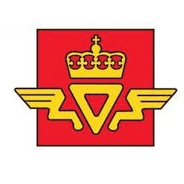IGEL Secure Endpoint OS
for Now and Next
IGEL is a transformative secure endpoint OS designed for SaaS, DaaS, VDI and secure browser environments. IGEL significantly reduces endpoint TCO and your endpoint attack surface.


When it was time to change their old Windows machines, Statens Vegvesen decided to try a new and, for them, previously unexplored area – thin clients. They needed a stable and fast thin client park for their web application for their customers, and with IGEL’s thin clients this purpose was fulfilled, and they’ve also experienced IGEL as very cost effective with a good administration and well-functioning management solution.
Statens Vegvesen, who in 2014 celebrated its 150th anniversary, is a company with about 7,000 employees and is in charge of everything that has to do with road construction in Norway, and is also in charge of maintaining all national roads, similar to Vägverket in Sweden. They work to assure that all who walk, bike, drive or use public transportation will arrive safe and sound. They design, build, operate and maintain the national and country roads in Norway, and they are also responsible for conducting the written knowledge tests for driver’s license and the inspection of vehicles and road users. Statens Vegvesen consists of five regions: the Northern region, the Middle region, the West region, the South region and the East region, and it has 72 traffic stations and five road traffic control centers distributed over the country.
Benny Markussen, who’s in charge of the terminal server areas at Statens Vegvesen, says that one of the responsibilities of Statens Vegvesen is to help people get their driver’s license, and they previously used Windows machines for their web application, until they discovered that the Windows machines had gotten old. That’s when they made the decision to look into and get thin clients. “In our case it was about 650 thin clients that we wanted to offer a web application on. In all that was the reason; that we could save the cost for hardware in the long run by switching to a client without any movable parts”, Benny informs. “Thin clients were more cost effective and stable. For the terminals it works better with thin clients.” Statens Vegvesen has felt satisfied since the switch to thin clients and they aren’t planning to switch back, they will continue using thin clients.
Statens Vegvesen got in touch with IGEL through a Citrix arrangement where they observed a demonstration of IGEL which impressed them. They realised that IGEL had a good management solution, and when it was time for them to get thin client technology they chose IGEL directly. “It was a competition that IGEL won because they were the best”, Benny says. “I have about 5-10 years of experience of thin clients before the switch to IGEL. I have been in contact with thin clients before, so when we were going to get thin clients we tested IGEL’s management solutions before the switch and we found what we were looking for.” One of the most important things for Statens Vegvesen, and which has worked very well, is the stability and speed of IGEL’s thin clients. “The stability is the most important factor, and also that they are quick to boot.The stability in particular is very important since this is our meeting with the customer. For us it is very important that it works, that you can come in and everything is done, you can just go ahead and use it right away,” Benny says.
During the switch to IGEL, Statens Vegvesen chose not to run it on a terminal server and neither virtual clients, instead they chose to run the applications directly on the thin clients. “We don’t need to pay terminal server licenses to Citrix or Microsoft to use this solution,” Benny says, and this has helped them to save a lot of costs. “We needed to make a further development of the application itself, for a one-time cost, and now it’s done. It was a necessity for us to fix it, because we have a responsibility to care for. We save about 1 million NOK in license fees this year, 1 million NOK per year just in pure licenses, by the fact that we’ve chosen to run directly on the thin clients,” Benny explains.
The timeline of the switch to IGEL was just over two months, a switch that went quickly and smoothly. “We ran a development of the web application, which took longer than we thought. But for the actual roll-out of IGEL the switch was made at 66 places. At the same time we changed screens/ monitors at most of the places. We have about 40 local IT-supports, which are run from our office, who were out and did the change, and that took about 2 months, and for the most part the change went very quickly and easily. It went smoothly. For all the places we needed to update the firmware on all the thin clients when they were rolled out, and that also went very well,” Benny says. The new system was then introduced to the employees at the traffic stations, those who are in charge of the written knowledge tests for the driver’s license, through so-called ‘user guides’, and the IT-support received a page with information about the thin clients. All in all they haven’t needed much education after the change, and it has gone very well. An important feature of IGEL’s thin clients, which has impressed Statens Vegvesen, is their management solutions. Before the switch to IGEL they mainly tested IGEL’s administration solution, and for them, and the kind of administration they need, IGEL’s administration solution was the best. “This is a new administration for us, with the thin clients. We haven’t replaced the entire client park, but we use some thin clients and some PCs. Before the thin clients, we had approximately 10,000 thick clients, but now we are down to about 9,000 thick clients,” Benny says. The administration of IGEL’s thin clients works very well for Statens Vegvesen and they have very few problems with it. When it was time to switch to IGEL’s thin clients it was Benny who was primarily responsible for the project, along with two specialists for all that is hardware related. Benny has responsibility for the system, along with updates of UMS or IGEL, and he is also responsible for the thin clients. “We have had a total of approximately 5-10 thin clients with errors since we bought them, about 5 during the roll-out and then some after the roll-out, over 2.5 years ago. So there’s not much that has malfunctioned or gone wrong with the thin clients, which is very good. The thin clients work well,” Benny says.
What impressed Statens Vegvesen the most with IGEL’s thin clients was their management solution. “About 3 months after the purchase of IGEL we needed a further development of the web application, and that was easy to update and develop. We also contacted IGEL shortly after the purchase due to a bug in the firmware and the thin clients, and shortly after that we got access to a beta-image that we tested and it went well, and that also came with the next release of the firmware. I was very impressed by the short time it took to fix the errors with the software. IGEL solved the problem with our software quickly and well. It is good that IGEL’s focus is only thin clients, because then they could solve it in a timely and effective manner. That was what impressed me the most, and this was after we had already purchased the thin clients from IGEL,” Benny explains. The IGEL model which is mainly used by Statens Vegvesen is the UD3 Linux, and they are used together with a web application for the customers. For the thin clients they use the Multimedia Player and web browser, and the only thing that they needed to integrate into the thin client network was the headset that they use, and this integration went smoothly.
Statens Vegvesen has experienced a lot of positive changes since the switch to IGEL, partly when it comes to time. “We experience few support cases now, it’s not often that people contact us about something that has gone wrong. This saves time for the support! We also see savings when it comes to licenses, and we also experience savings for hardware”, Benny explains, and they’ve had mostly positive feedback about IGEL from their employees. “It’s easy to use, for the users and for the employees at the traffic stations. For the users/the staff a big change was made, and it has given more focus for the users”, Benny continues. A crucial factor when getting IGEL was the tool IGEL Universal Management Suite, which Statens Vegvesen has had a very good experience of; “It was absolutely crucial for us. It’s important for us to have a feedback which is correct, that we get a feedback from the clients if they are on or off, it was important for us to have control. We have a spread of about 3000 kilometers for the thin clients, and we don’t have local IT-support where the thin clients are placed. IGEL UMS is great and works very well. UMS also has a good shadow function. It provides a good control, and we have a good experience of this tool!” Benny says. As mentioned, Statens Vegvesen is using a mix of thin clients and PCs; “Our PCs today go from being stationary machines to becoming laptops. For the thin clients we are using, as mentioned, UD3 Linux, and we are only using IGEL’s thin clients,” Benny explains. In total they have about 9,000 PC, of which about 4,500 are laptops and about 4,500 are stationary, and about 700 thin clients. For Statens Vegvesen there are certainly more opportunities to implement thin clients, and for future projects IGEL will surely be an option.